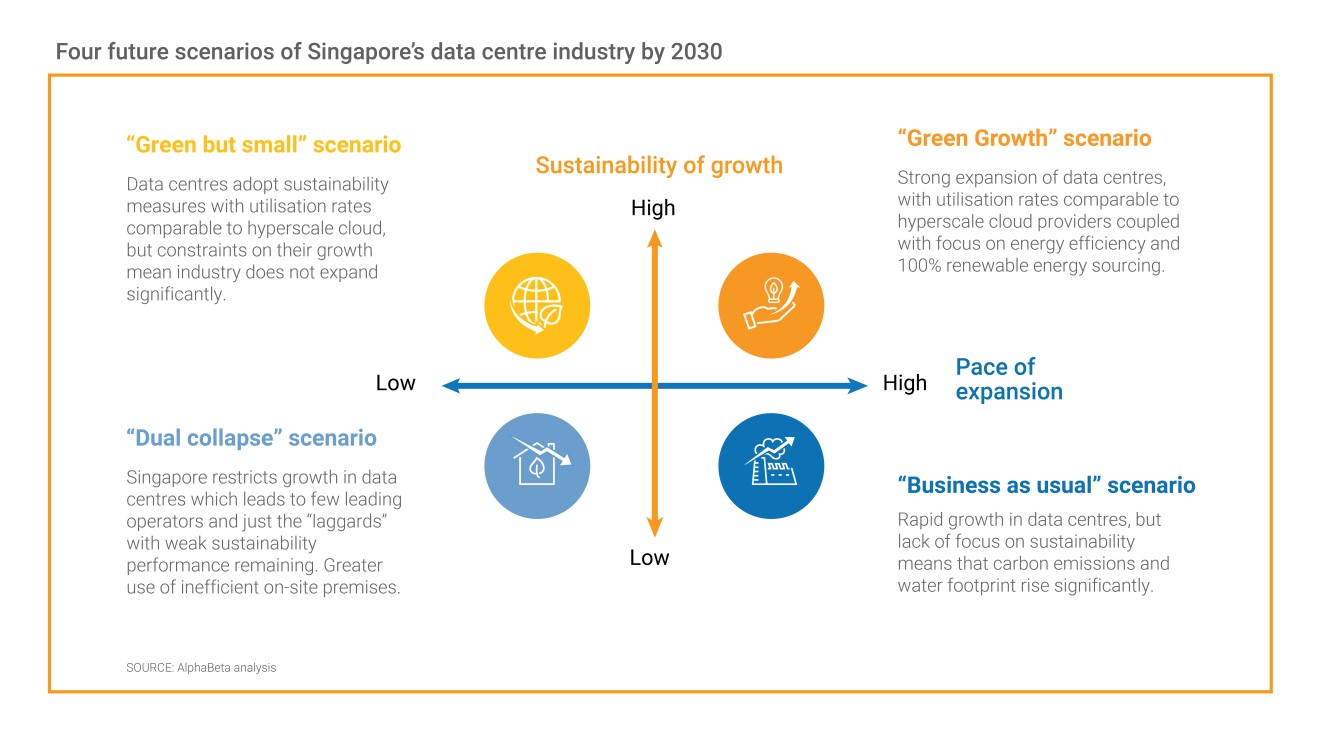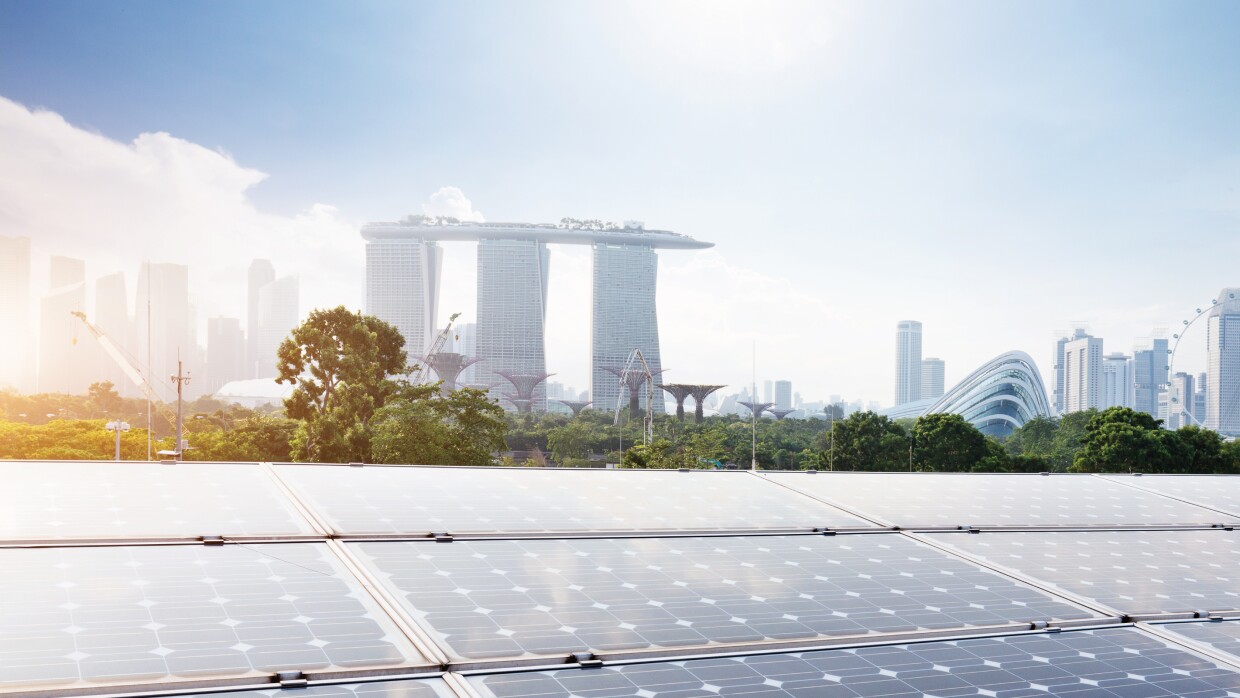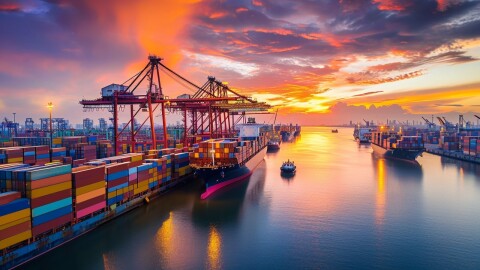According to the Green Data: The sustainable data centre opportunity for Singapore report by AlphaBeta, today, data centres create and support over S$2 billion in Singapore’s annual GDP and enable up to 1.6 million indirect jobs1 that are dependent on cloud technology. However, the two-year data centre moratorium in Singapore, which is in the process of being lifted and replaced with a new framework, indicates concerns around how to ensure that the data centre industry’s growth is aligned with Singapore’s sustainability goals.
In recognising that cloud data centres are enablers in achieving its climate ambitions, the Singapore government has much to gain in continued collaboration with industry. At AWS, we believe cloud technology has a crucial role to play in accelerating both digital transformation and green economic recovery. We are committed making our own infrastructure more sustainable and we are accelerating sustainable transformation by providing the cloud-based tools and services that will help businesses and public sector organizations decarbonise and achieve more sustainable outcomes.
The AlphaBeta report provides an analysis of the current economic and environmental contributions of Singapore’s data centres, as well as how the industry could evolve under different scenarios from now until 2030. The “Green growth” scenario in the paper shows a possible pathway to achieving economic success without compromising on sustainability goals.
The Green Growth scenario
According to AlphaBeta, the Singapore Government could consider four potential scenarios in the development of its data centre industry to 2030. This includes adapting international best practices to support the country’s sustainability goals without letting go of its digital ambitions. These scenarios are called Unchecked Growth, Dual Collapse, Green but Small, and Green Growth.
Figure 1:

The ideal scenario is the “Green Growth” model, which accelerates strong expansion of data centres in Singapore without compromising Singapore’s sustainability goals,” said Fraser Thomson, Principal at AlphaBeta. “In this scenario, data centre operators place a stronger focus on sustainability performance through utilisation rates and energy efficiency on par with cloud data centres, with better computing power, lower power usage effectiveness (PUE), complete renewable energy sourced for energy requirements, and the use of liquid cooling. This means that almost 9x higher VA and almost 3x more jobs are possible, while reducing C02 emissions by 90% from today’s levels. This Green Growth scenario aligns with Singapore’s intent to facilitate new capacity allocation in a sustainable manner, which will be key to gradually raising the efficiency of the data centre industry, while supporting Singapore’s overarching digital economy objectives.”
Our commitment to Singapore’s sustainable data centre ambitions
Crucial to attaining Singapore’s goal of reaching net-zero carbon by 2050 will be data-driven, cloud-enabled solutions coupled with scaled, direct investments in clean energy and decarbonising technologies by cloud service providers in Singapore.
Energy efficiency is the first fuel for lowering carbon emissions. AWS is continuously working to increase the efficiency of our facilities, and our scale allows us to achieve higher resource utilization and efficiency than typical on-premises data centres. In fact, moving computing workloads from on-premises data centres to the cloud can reduce the carbon footprint associated with running IT workloads for companies in Singapore by more than 76%—just from energy efficiency gains alone—according to 451 Research. AWS is also working to address the embodied carbon of our new data centres. By reducing the cement content in our concrete and sourcing steel from electric arc furnace mills, we have already found that we can reduce the embodied carbon in the structure of our data centres by at least 20%.
Beyond energy efficiency, Amazon’s goal is for its entire business to be powered by 100% renewable energy by 2030, and we are on track to meet this goal five years early by 2025. In 2021, we invested in a 62 MW solar energy project in Singapore with Sunseap, which once operational will generate 80,000 MWh of clean energy annually, enough to power more than 10,000 Singaporean homes. This is but the first of many such investments we are making in Singapore and continue to make across the region.
While we are focused on reducing the carbon footprint of our customer’s IT workloads through sustainable infrastructure, the sustainability innovation capabilities of cloud technology can further accelerate sustainability progress. In fact, a recent report by the International Energy Agency (IEA) found that while the decarbonization potential of climate pledges by cloud service providers like AWS is significant, one of the most transformative roles the cloud can play is to accelerate the innovation process itself. This goes beyond carbon tracking and resource optimization to reduce the carbon footprint of IT workloads, to actually driving sustainable outcomes through cloud-led sustainability innovation. This includes, for example, leveraging cloud enabled technologies such as artificial intelligence (AI) or machine learning (ML) and real time analytics to lower fuel consumption in aviation through route optimisation, saving water through better utility management, and integrating renewable energy resources into the grid.
Moving forward
In economic terms, the Green Growth model represents more than 20,000 new jobs in Singapore, and an estimated S$20.7 billion in economic output contributed by data centres by 2030. Environmentally, this means a 90% reduction in carbon emissions. Progressing towards balanced sustainability and economic goals will, in turn, ensure local data centres support Singapore’s strategic economic position as a global business hub and a data centre service distribution hub, given that Singapore houses about 60% of the data centres in the Asia Pacific region.
Cloud-enabled technologies—such as AI/ML, Internet of Things (IoT) and edge computing—will be critical to accelerating systemic green digital transformations at scale.
Highly ambitious, cross-industry collaborative models from other jurisdictions, such as the European Climate Neutral Data Centre Pact, could serve as a model for developing and managing sustainable criteria for data centre expansion in Singapore. This Pact, developed in co-operation with the European Commission, represents an industry-wide commitment to proactively lead the transition to a climate neutral economy. The Asia Pacific region, starting with Singapore, can benefit from similar collaborations between government and industry to meet shared objectives of promoting best-in-class data centre efficiency, sustainability, and inclusive growth for all—all while contributing in meaningful ways to accelerating progress towards Singapore’s economy-wide net zero emissions targets.
[1] This figure of 1.6 million indirect jobs refers to approximately 25,000 jobs due to presence of physical data centres; 7,000 directly for DCs and rest in the supply chain of DCs; 496,000 jobs that involve transition from on premises-based IT environments to cloud environments, and designing and refining new cloud and hybrid architecture patterns (typically in partners/ ICT sectors); and 1,175,000 jobs that that involve using cloud-based software-as-a-service (SaaS) applications and tools (e.g., finance jobs requiring using cloud tools).











